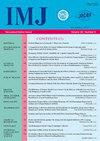CEREBROVASCULAR DISORDERS IN PATIENTS WITH COVID-19
Q4 Medicine
引用次数: 1
Abstract
COVID−19 is an acute respiratory viral disease caused by the RNA virus of the SARS−CoV−2 (2019 nCoV) coronavirus family and can have both mild course in the form of acute respiratory viral infection and severe one with frequent complications such as pneumonia, thrombosis, cerebrovascular disorders and high mortality. Hypoxia of the brain and spinal cord is associated with impaired gas exchange in the pulmonary alveoli, progressive respiratory failure with subsequent decompensation of function and structural damage to all organs and systems. Neurological disorders in COVID−19, observed in almost a half of patients, can be divided into three groups: manifestations of the central nervous system, lesions of the peripheral nervous system, myopathy. In order to study the lesion of the nervous system in patients with COVID−19, a history of acute cerebrovascular disorders and clinical picture of stroke without the emergence of new foci in neuroimaging, three clinical cases were analyzed. All patients complained of speech impairment, disorientation in time and space, numbness and weakness in the extremities on the background of acute cerebrovascular accident in the anamnesis, accompanied by general weakness and fever to subfebrile figures. COVID−19 pneumonia was observed during computed tomography of the lungs. However, during neuroimaging new foci of infarction were not identified. Thus, given the lack of new foci of infarction during neuroimaging, lack of hypercoagulation and cardiac causes, it can be concluded that focal symptoms in patients with COVID−19 with a history of stroke cause hypoxia of brain cells in the area around the necrotic foci resulted from previous heart attacks. Key words: nervous system, lesions, COVID−19, coronaviruses, encephalopathy, hypoxia.COVID-19患者的脑血管疾病
COVID - 19是一种由SARS - CoV - 2 (2019 - nCoV)冠状病毒家族的RNA病毒引起的急性呼吸道病毒性疾病,病程可轻如急性呼吸道病毒感染,也可重如肺炎、血栓形成、脑血管疾病等常见并发症,死亡率高。脑和脊髓缺氧与肺泡气体交换受损、进行性呼吸衰竭和随后的功能失代偿以及所有器官和系统的结构性损伤有关。COVID - 19患者中几乎有一半出现神经系统疾病,可分为三组:中枢神经系统表现、周围神经系统病变、肌病。为了研究COVID - 19患者的神经系统病变情况、急性脑血管疾病病史和脑卒中的临床表现,在神经影像学上没有出现新的病灶,我们分析了3例临床病例。所有患者均以急性脑血管意外为背景,在记忆过程中出现语言障碍、时空定向障碍、四肢麻木无力,并伴有全身无力、发热至亚热。肺部计算机断层扫描观察到COVID - 19肺炎。然而,在神经影像学中,没有发现新的梗死灶。因此,考虑到神经影像学未发现新的梗死灶,且无高凝和心脏原因,我们可以得出结论,有卒中史的COVID - 19患者的局灶症状可能是由于既往心脏病发作导致坏死灶周围区域的脑细胞缺氧所致。关键词:神经系统,病变,COVID - 19,冠状病毒,脑病,缺氧
本文章由计算机程序翻译,如有差异,请以英文原文为准。
求助全文
约1分钟内获得全文
求助全文
来源期刊

International Medical Journal
医学-医学:内科
自引率
0.00%
发文量
21
审稿时长
4-8 weeks
期刊介绍:
The International Medical Journal is intended to provide a multidisciplinary forum for the exchange of ideas and information among professionals concerned with medicine and related disciplines in the world. It is recognized that many other disciplines have an important contribution to make in furthering knowledge of the physical life and mental life and the Editors welcome relevant contributions from them.
The Editors and Publishers wish to encourage a dialogue among the experts from different countries whose diverse cultures afford interesting and challenging alternatives to existing theories and practices. Priority will therefore be given to articles which are oriented to an international perspective. The journal will publish reviews of high quality on contemporary issues, significant clinical studies, and conceptual contributions, as well as serve in the rapid dissemination of important and relevant research findings.
The International Medical Journal (IMJ) was first established in 1994.
 求助内容:
求助内容: 应助结果提醒方式:
应助结果提醒方式:


